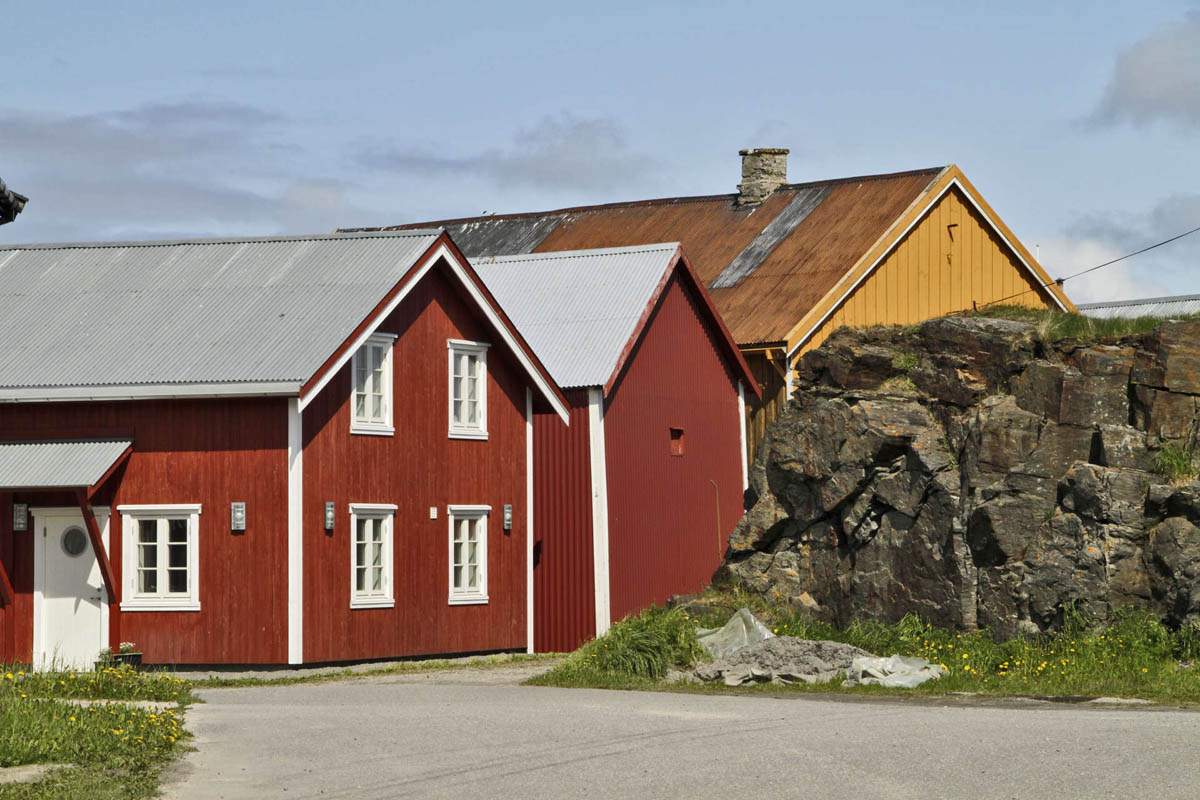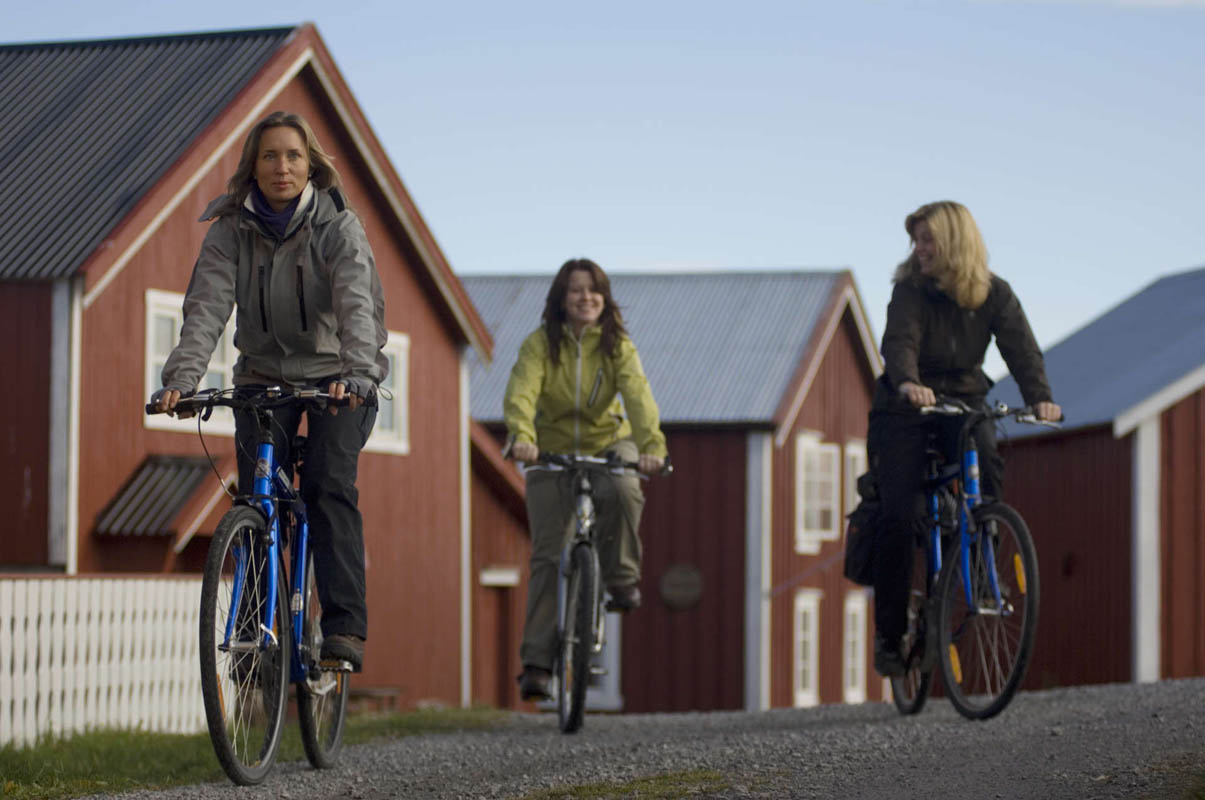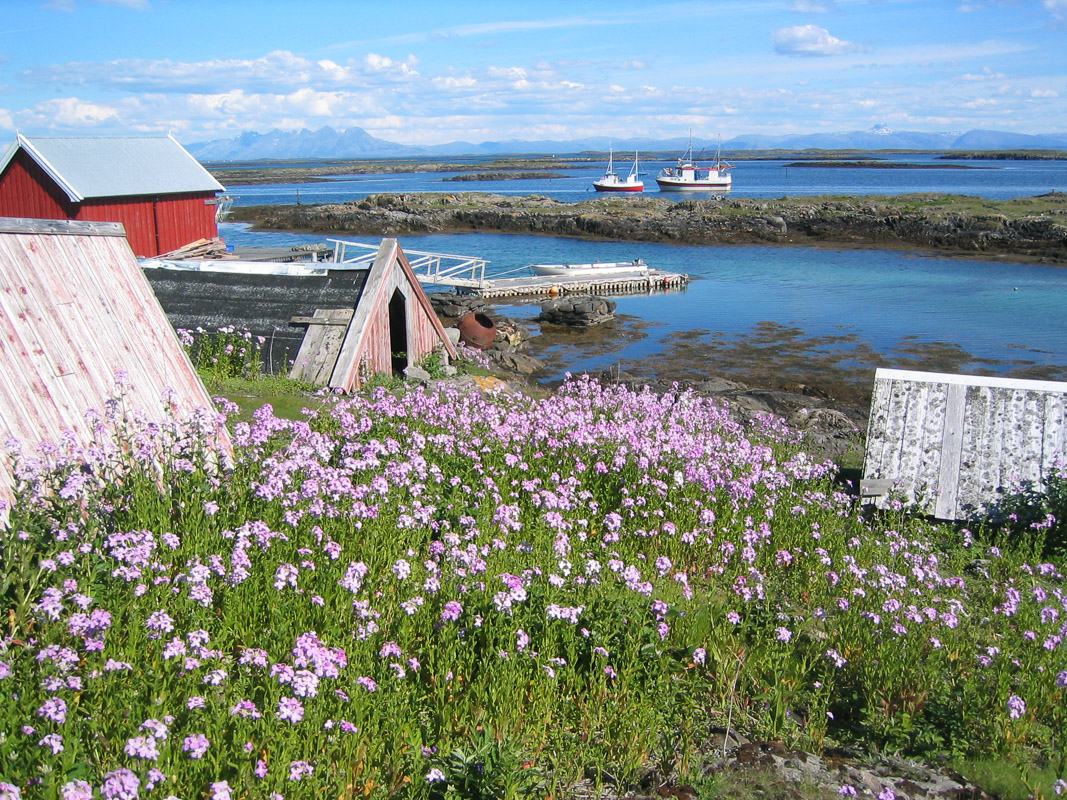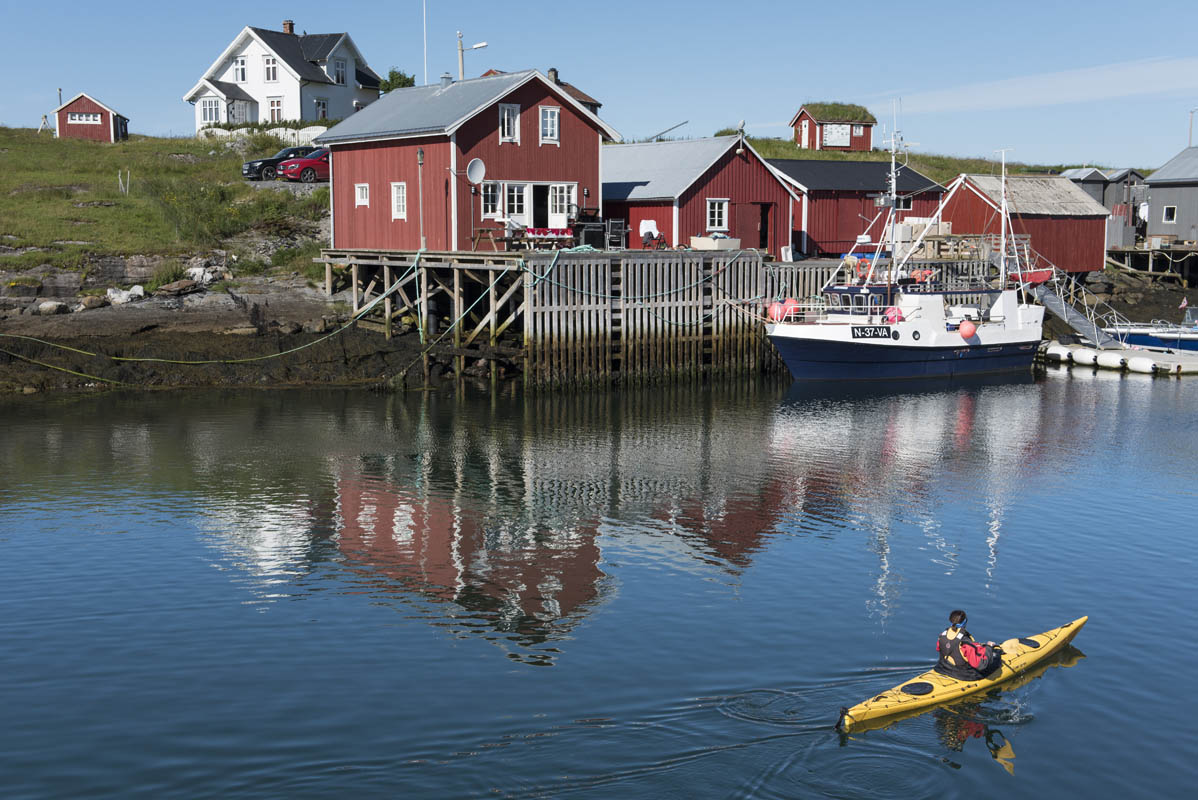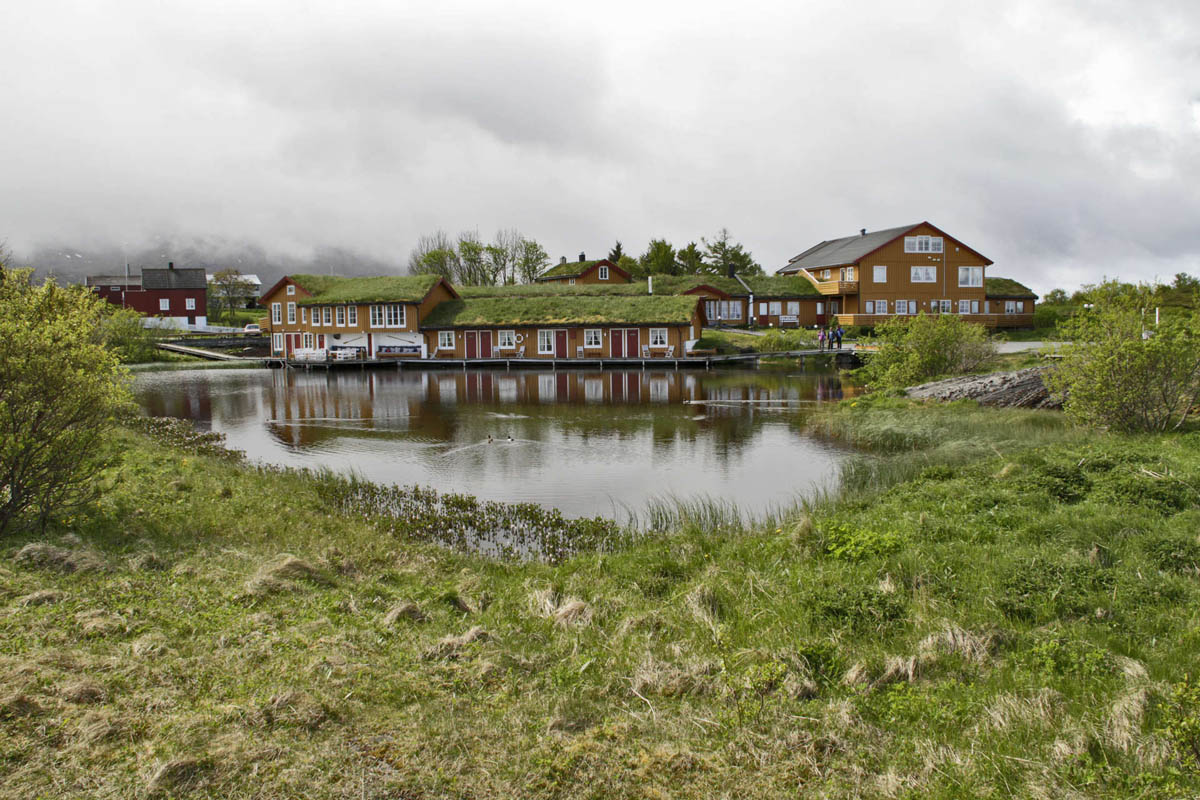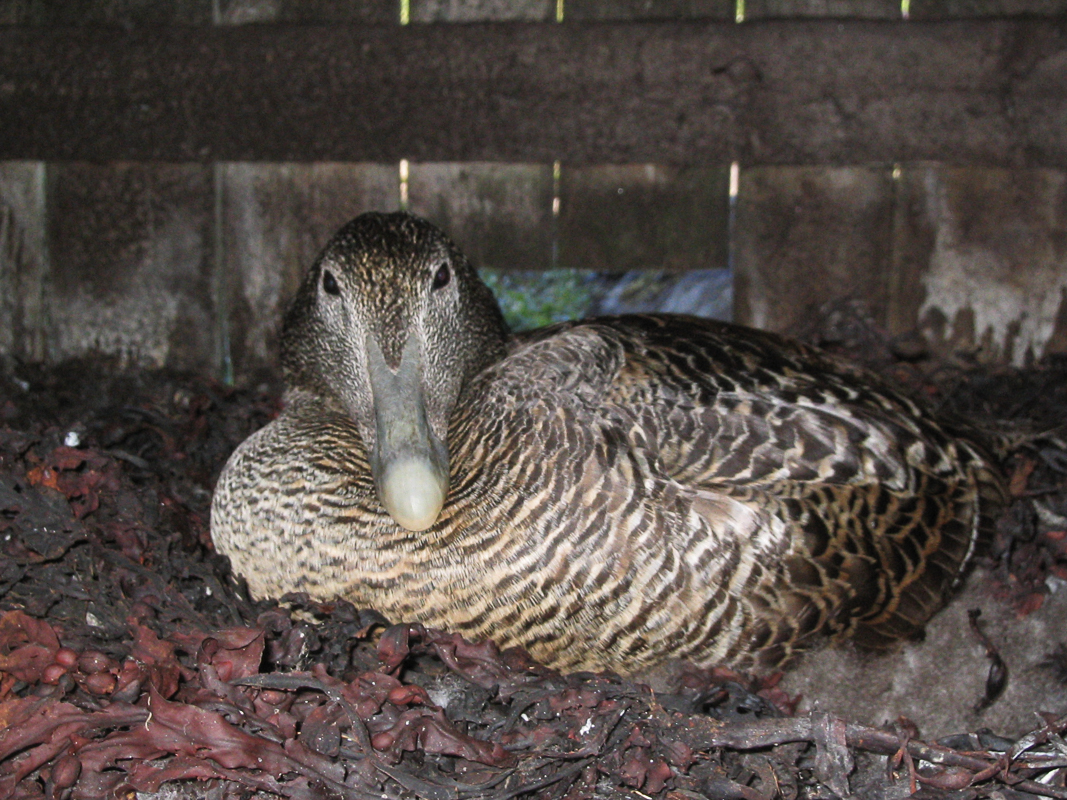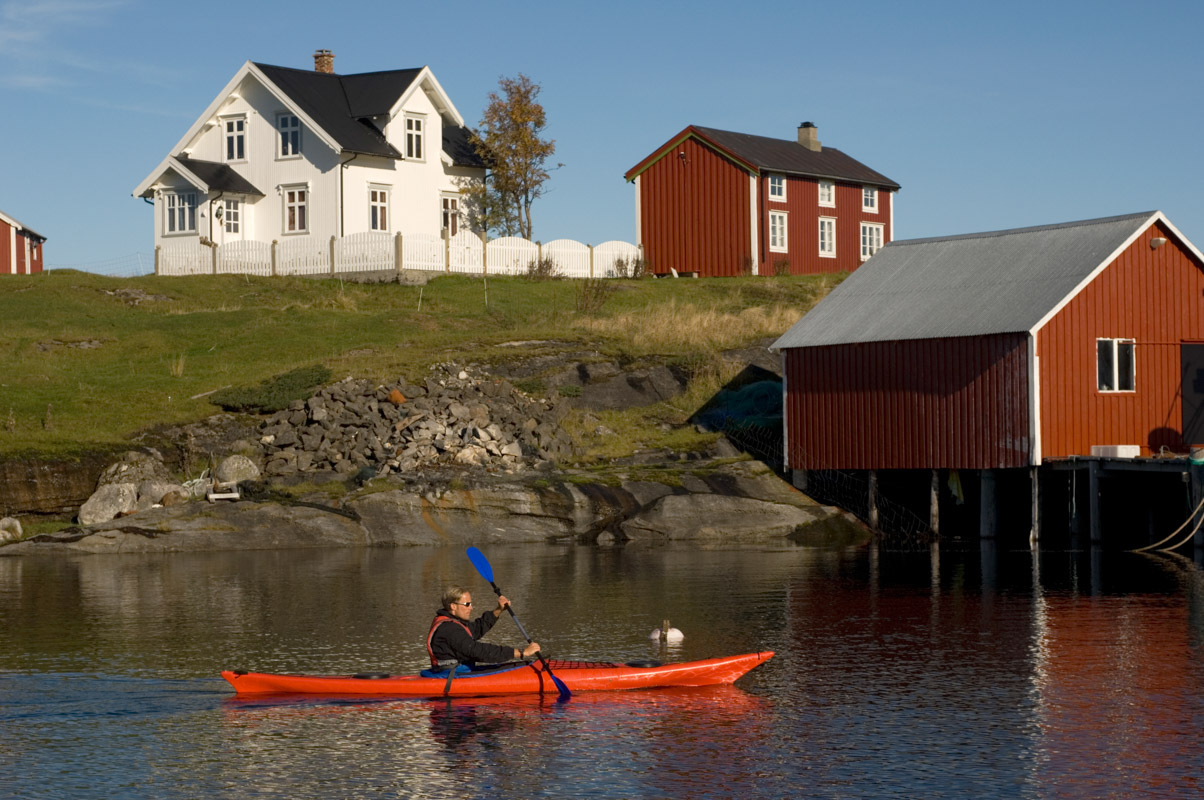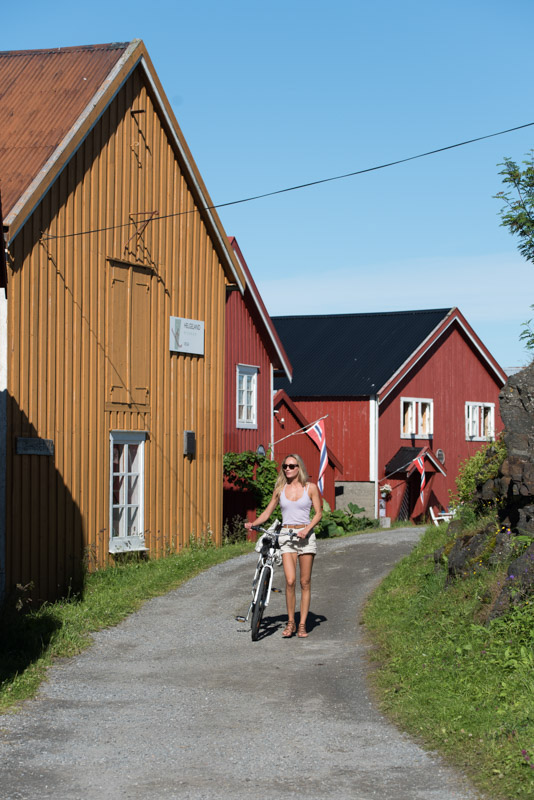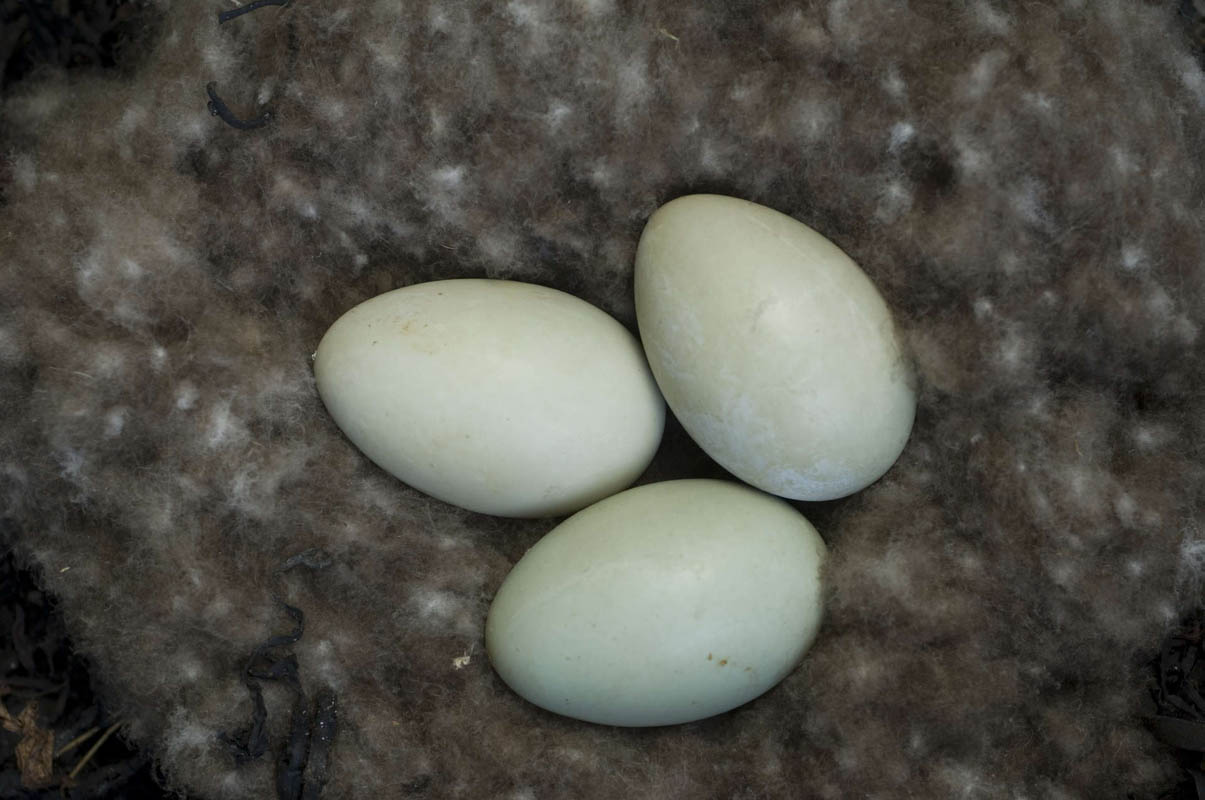Vega is the story of peaceful coexistence between man and nature: Of women tending to eider duck and being rewarded with the world’s most exclusive down, of geese, curlews, divers and herons sharing the island with people and short-tailed sheep. Come out and get to learn more about this unique culture and meet people with a story to tell, while allowing yourself to be pampered, just a little bit.
From the summer of 2019, the island of Vega, a World Heritage Site at the southern end of Northern Norway, welcomes visitors who appreciate the connection between man and nature for a long weekend of comfort, relaxation and meaningfulness.
The story of the eider duck
The story of Vega is the story of the eider duck. The 6,500 islands surrounding the main island has for centuries been famous for its down harvesting villages, island communities where eider ducks and people have developed a symbiotic relationship for mutual benefit and comfort. So-called down maids, the women on these small islands, would build small houses, both single family homes and rows of terraced houses, for the eider ducks. They would then patrol the area with broomsticks to keep ravens and eagles away. The men kept a shotgun at the ready in case otters decided to try their luck and steal the eggs. They would get their reward when the eider hen waddled away from the nest with her chicks around midsummer to continue their lives at sea. The down lining the nests could be harvested and turned into exclusive duvets and pillows. This tradition was dying out all along the coast, but on Vega they recruited new down maids and transferred the knowledge, keeping the tradition alive. Once the eggs have hatched and the nests are abandoned, the down is harvested and turned into fluffy duvets and pillows.
The World Heritage Centre – the Greater Vega Context
The Vega tradition is so unique that the Vega Archipelago was inscribed on the UNESCO World Heritage List. My visit started at the brand new World Heritage Centre, where the moving love story between eider ducks and down maids is explained. The old down maids peered down on me from black-and-white photographs, and Vega’s history, from the Ice Age to today’s world heritage status, was drawn up in simple terms. Separate glass containers hold eider down and goose down. You then press a button, and air blows in from below. The goose down is blown all over the place, but the eider down stays together, in a little compact ball. This down has tiny little hooks to keep the down together, and this is what makes eider down duvets so light and fluffy. We gathered on Vega blue benches and ate delicious Vega food while drinking in the view through north-facing windows. Then, we brought our coffee into the sheltered atrium and admired the beautiful, clean lines of the World Heritage Centre, noting how the grey panelling emphasizes the bold colours of furniture and walls inside. The architectural lines are modern in the Vega sense of the word.
Islands emerge at low tide
Sverre, who grew up on a small island on the northern edge of Vega’s archipelago, took us out in his boat. All of the islands are low with some only emerging at low tide . In the spring they are brown, but they turn emerald green in the summer. Most islands are completely treeless, but planted groves of Sitka spruce and pine trees grow here and there. Some islands have a single, modest Nordland house, and some of these have collapsed. On others, whole communities of colourful houses rise from the sea. Hundreds of people lived all over this archipelago once, but most settlements were abandoned from the 1950s onwards. Now, only a handful of people live out hear year-round.
On Emårsøy hear ballads and anecdotes
In dazzling spring sunshine, we sailed into the sound between two islands. A couple wearing knitted cardigans greeted us, the man also wearing a kasjettlue—a traditional black sailor’s cap with a polished visor. Turid and Gisle showed us around their dream home, to the Nordland house they bought from Astrid, who lived here until she was seven, which they restored. The barn is from a different island. They salvaged it and re-erected it here. Gisle sang a couple of broadside ballads in a strong South Helgeland dialect, we had coffee and lefse in the tiny living room and took a peek into Augusta’s chamber, admiring her best dress. Turid told stories and anecdotes she heard from Astrid. Before we left, we walked up to the island’s highest point, just a few steps away from the modest house, and looked out across the archipelago to the houses on Skjærværet, just beyond the tidal range, and north to Skogsholmen. We realized that life on Emårsøy was not all sunshine and happiness, it was also hard work and hardship.
A golden moment at Vega Havhotell
What? The light woke me up at 5 in the morning. The open moors between the hotel and the water bathed in golden morning light, so I opened the door to let in the crisp spring air and the calls of the curlew. To the northeast, the Seven Sisters was a marbled spectacle of snow and jagged granite and to the north, flat islands appeared like short and long lines in a white-blue sea. Way off in the distance were some round humps, which I later learned was Øksningan, a group of steep and rocky islands outside Herøy. Furthest away, like a grey shadow, I could see the characteristic nose of the puffin island Lovund rising above the myriad islands. Now, while the early bird may get the worm, the second mouse gets the cheese, so I chose to get back in bed for some more sleep. From the large hotel windows, it’s easy to follow the ever-changing light here in Helgeland, from rainbows and fifty shades of grey across the sky to the midnight sun dipping its feet in the sea for a few days around midsummer, colourful summer sunsets and the first northern lights in mid-August. Take the opportunity to sink down into your wing chair and leave the phone on the table. Some moments are too precious for trivial nonsense.
Informal gourmet dining keeps you at ease
“I could feel your need for coffee all the way out in the kitchen,” my server said as she filled my cup. The cozy blue room is bright and welcoming, and the breakfast buffet is tasty and full of local specialities. I stayed a long time, enjoying talking to the other guests. Later on, the five-course dinner prepared by Chef Jon Aga filled me with awe. Jon is from Hardanger, but his wife Anne is from Vega, and they took over the Vega Havhotell in 2003. Full of anticipation, we settled in at the beautifully decorated table and enjoyed the delectable meal, consisting of locally sourced goose liver in apple cider, steamed halibut risotto, lamb with some toughness to it—Jon doesn’t like it too tender—and lamb sausage with ginger and chili, warm Camembert on a bed of frozen apple and tomato, and pear cooked in cider. Jon personally presented the menu and happily and cheerfully answered any questions we had. By the time you visit, the menu will likely have changed completely; Jon likes to come up with new dishes. However, fish and meat from Vega, a few clunks of cider from Hardanger and a good dollop of heavy cream are staple components.
The landscape is pristine
Didrik met up with our little group and led us across the road and into Holandsosen Nature Reserve. This river mouth is an area of brackish water with plenty of sources of food for web-footed birds and waders, and we followed him on footbridges across streams, along steep, meandering banks and over gravelly ridges. There are geese everywhere on Vega; grey geese year-round and barnacle geese en route to the Arctic in the spring. We also saw ducks, oystercatchers, ptarmigans and herons. Whooper swans and shelducks are also common. And the drumming flight of snipes is everywhere. White-tailed eagles are always on the hunt—we saw up to five of them in the air at the same time. My favourite, however, is the delicate call and elegantly curved beak of the common curlew. We marvelled at the purple saxifrage peeking out among the heather. Later in the summer, Vega’s 11 orchid species spring forth from the calcareous soil. This landscape is far from pristine—we observed controlled burning of the heather to create better grazing conditions for sheep. Yet another example of people’s relationship with nature on this unique island.
Vega is both flat and steep
Where the eastern side of Vega is flat, the western side is full of jagged 800-900-metre peaks, rock faces and screes. If you follow the gravel road around the peaks, there is nothing to shield you from the full force of the Atlantic Ocean. In fair weather during the summer season, this is Vega’s sunshine coast. It is also the location of Vega’s newest attraction—the 2,000 Vega steps. Getting to the top will cost you heavy sweat and laboured breathing, and your thighs will get a workout on the way down, but the views from the top out over the 432-metre high rocky island Søla, toward Bremstein Lighthouse and the hundreds of islands comprising Hysvær to the west and the impressive myriad of islands to the north is well worth it.
